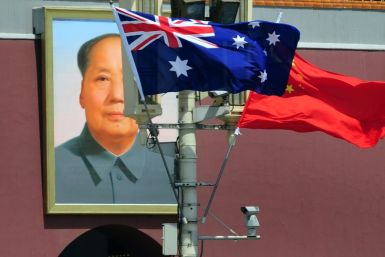Australian stocks drop at end of 2010
The Australian stock market has finished 2010 on a disappointing note, dropping almost one per cent amid broad based declines.
At close, the benchmark S&P/ASX200 index was down 45.2 points, or 0.94 per cent, at 4,745.2 points, while the broader All Ordinaries index had fallen 39.8 points, or 0.81 per cent, to 4,846.9 points.
On the ASX 24, the December share price index futures contract was 58 points weaker at 4,738 points, with 9,878 contracts traded.
The ASX200 finished 2010 about 2.5 per cent down on its 2009 closing level.
All the major components of the market finished lower the materials sector slipped 1.06 per cent, financials backpedalled 1.16 per cent and energy stocks ended down 0.69 per cent, according to Iress data.
Just two companies on the S&P/ASX20 closed in positive territory Telstra and Westfield Retail Trust finished up one cent at $2.79 and $2.57, respectively.
Offshore leads were mostly negative Wall Street closed lower, while precious metals and crude oil prices finished weaker.
One bright spot during the overnight session was the performance of copper, which climbed about 1.2 per cent.
Among resources stocks BHP Billiton eased 60 cents to $45.25, while Rio Tinto slipped 23 cents to $85.47.
Local banking stocks finished weaker.
ANZ fell 33 cents to $23.35, Commonwealth Bank was down 50 cents to $50.77, National Australia Bank was 33 cents weaker at $23.70 and Westpac slipped 40 cents to $22.21.
Insurers were also in negative territory as devastating floods continued to cause chaos across large swathes of Queensland.
Suncorp declined nine cents to $8.61, Insurance Australia Group was down six cents at $3.88 and QBE was off 24 cents at $18.15.
Suncorp, which includes insurance brands AAMI, Apia, GIO and Vero, on Friday reassured investors it has a reinsurance program, adding that it had received 1,450 claims from across Queensland since Christmas Eve.
The spot price of gold in Sydney was $1,407.30 per ounce, down $US7.20 from Thursday's close of $1,414.50.
The most traded stock by volume was Legend Mining, with 106.7 million securities changing hands for $8.9 million.
The company was up eight-tenths of a cent at 7.9 cents.
Preliminary national turnover was 1.39 billion shares worth $1.77 billion, with 497 stocks up, 480 down and 390 unchanged.
The Australian dollar remained near its post float highs against the U.S. dollar Friday, drifting between slight gains and losses, in the last session of the year.
Australian bonds rallied on both ends of the curve, reflecting some concern about weak housing and business credit data in the country.
After a quiet few weeks on the local economic front, Friday provided some downbeat figures.
The RP Data Rismark report on Australian home prices showed that capital city dwelling prices fell 0.2% in November.
In addition, even though November private sector credit increased slightly, credit to the business sector fell for the fifth straight month.
In the currency markets, however, the figures did little to quell a banner year for the Australian dollar, which has rallied for roughly six months and will close the year near its highest levels since the currency was floated.
The Australian dollar traded at $1.0169, down slightly from $1.0171 late Thursday.
The currency hit its post-float high of $1.0197 in Thursday afternoon action in Sydney.
Against the Japanese yen, the Australian dollar traded at 82.90, up from 82.85 late Thursday.
More from IBT Markets:
Subscribe to get this delivered to your inbox daily
Follow us on Twitter.
Follow us on Facebook.






